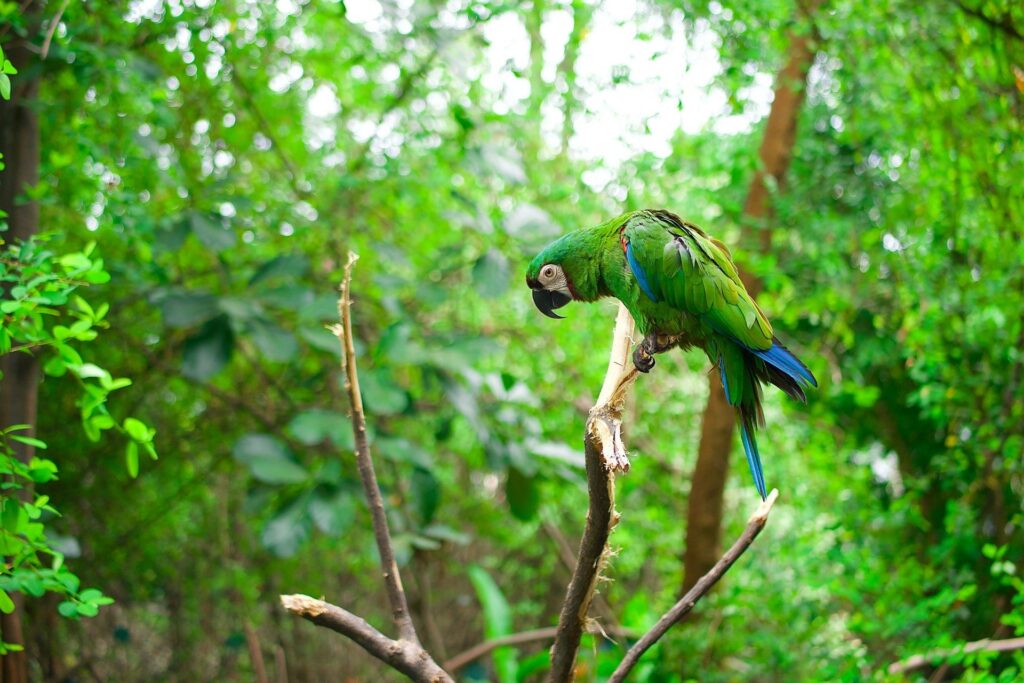Planning a trip to Peru? It’s an amazing country with rich culture, breathtaking landscapes, and unforgettable adventures.
But, like any journey, especially to a place as diverse as Peru, it’s essential to consider your health. Nothing can ruin a trip faster than getting sick – or needing medical attention.
Here’s a health-focused travel itinerary to make sure you’re well-prepared and can fully enjoy everything Peru has to offer.
Vaccinations: What You Need (And Why)
First things first – let’s cover vaccinations. Depending on where you’re coming from, it might be recommended to get a few shots before you head to Peru.
According to health experts and organizations like the CDC, some of the most commonly recommended vaccines for travelers are Hepatitis A, Typhoid, and Yellow Fever.
- Hepatitis A is transmitted through contaminated food and water. Even if you’re careful, you never know what could be lurking in that delicious ceviche or street food. Getting vaccinated is a smart move.
- Typhoid is another food and waterborne disease. It’s less common but still a risk, especially if you’re heading off the beaten path or eating in rural areas. The vaccine is effective and gives you peace of mind.
- Yellow Fever is mainly a concern if you’re venturing into the Amazon or other jungle regions. Even though it’s not mandatory, getting the shot is a good idea if you’re exploring the Amazon Basin.
Are these vaccinations required? No, they are not required. However, depending on what area of Peru you’re in, being up to date on vaccines is the wisest choice.
Malaria Prevention
If your Peru itinerary includes the Amazon or other low-altitude jungle areas, malaria prevention should be a major focus in your travel prep.
Anti-malarial medication is the go-to prevention method (vaccines are not available for USA citizens traveling internationally). It’s usually recommended if you’re heading to certain regions in Peru – like Iquitos, Madre de Dios, or Manu National Park. But malaria risk isn’t uniform across Peru.
While the side effects of certain anti-malarial meds can be a concern for traveling (nausea, dizziness, etc.) – Malarone is generally tolerable for on-the-go activity, and can be obtained via prescription with Runway Health.
Get Online Malarone Prescription ➜
Bottom line: Beyond high-altitude regions in Peru, doctors urge travelers to take malaria tablets before, during & after – which is a common traveler preference as well.
Altitude Sickness: How to Prepare for High Altitude
If your plans include Machu Picchu, Cusco, or Lake Titicaca, you’ll need to prepare for altitude sickness. These places sit at elevations of 8,000 to over 12,000 feet above sea level.
Altitude sickness can become a serious health problem, if you travel unprepared. Symptoms include:
- Headaches and nausea
- Dizziness and shortness of breath
- In severe cases, pulmonary or cerebral edema (which require immediate medical attention)
Acetazolamide (also known as Diamox) is commonly recommended to help prevent altitude sickness. It helps your body acclimate faster by reducing symptoms like headaches, nausea, and shortness of breath.
Travel Doctors Available Now ➜
If you’re unsure how your body will react to high altitude, it’s better to err on the side of caution and seek a prescription (use the link above). Start taking it a day or two before you ascend and continue for a couple of days after you reach high altitude.
What else can you do? Hydration is key. Drink plenty of water, avoid alcohol, and take it easy on your first few days at altitude. Coca tea (a traditional remedy) is also popular among locals and travelers alike for its minor relief of symptoms.
Travel Insurance
There are many short-term, flexible travel insurance options available – even if you’re traveling 1-2 weeks.
Health issues, accidents, and unexpected illnesses can happen (especially in a place like Peru where you might be trekking through remote areas or navigating busy cities).
A good travel insurance policy should cover:
- Health expenses
- Emergency evacuation
- Trip cancellations or delays
Not all policies are created equal, so make sure yours covers high-risk activities like trekking or visiting remote areas. And double-check that it includes medical evacuation—if you become ill in a remote area, you might need to be flown out.
Pro tip: Keep a digital and physical copy of your insurance policy, and know the emergency contact numbers. You don’t want to be scrambling to find them in the middle of an emergency.
First Aid Kit: What to Include
A well-stocked first aid kit is essential on the road. You don’t need to go overboard, but a basic kit can save you a lot of hassle. Here’s what to include:
- Band-aids for minor cuts and blisters.
- Antiseptic wipes to clean wounds.
- Pain relievers like ibuprofen or acetaminophen for headaches or minor aches.
- Antihistamines for allergies or insect bites.
- Anti-diarrheal medication (just in case).
Most travelers find these items more than enough. You can buy pre-made kits, but customizing your own is usually better since you know what you’re most likely to need. And don’t forget any personal medications you might need!
Remember: Make sure your first aid kit is compact and waterproof. You’ll be more likely to carry it with you if it’s easy to pack.
Water Purification: Stay Safe, Stay Hydrated
Tap water in Peru isn’t safe to drink, even locals avoid it. So, what’s the solution?
Many travelers opt for water purification tablets, or a portable filter.
If you’re traveling through cities like Lima or Cusco, you’ll find bottled water everywhere. But if you’re trekking or heading into more remote areas, you’ll want a reliable way to purify water. Tablets are lightweight and easy to use, while portable filters are a bit bulkier but provide a more eco-friendly option.
Is it really necessary? If you don’t have access to bottled water (or simply a clean water supply), then yes – it’s likely necessary. Even if you’re buying bottled water, you may want purification options for brushing your teeth or rinsing fruits and vegetables. The last thing you need is a stomach bug from contaminated water.
Insect Repellent: Essential for Jungle Areas
Mosquitos are more than just annoying—they can carry diseases like malaria and dengue fever. That’s why insect repellent is often viewed as non-negotiable, especially if you’re heading into the Amazon or other jungle areas.
DEET-based repellents are the most effective, offering long-lasting protection. Some travelers prefer natural alternatives, but they usually require more frequent application and might not be as effective. And don’t forget to apply it generously—mosquitos can bite through thin clothing.
Extra protection tip: Consider wearing long sleeves and pants in the evenings when mosquitoes are most active. And if you’re staying in jungle lodges, use bed nets treated with insecticide for added protection.
Sun Protection: Protect Your Skin
Peru’s diverse geography means you’ll be exposed to varying levels of sun intensity. Whether you’re hiking in the Andes or exploring the desert coast, sun protection is crucial.
Sunscreen with a decent SPF (at least 30) is a must. Apply it generously, and consider another layer every few hours – especially if you’re exposed to moisture from swimming (or simply sweating). A wide-brimmed hat and sunglasses with UV protection are also essential to protect your face and eyes from the sun’s harsh rays.
And don’t forget—the sun at high altitudes is stronger (read more here), so even if it’s cool or cloudy, you can still get burned. Take it seriously, or you’ll be dealing with painful sunburns that could ruin your trip.
Prescription Medications: Bring Enough for the Entire Trip
We covered antimalarials & altitude sickness medications above – but if you need to bring additional medications, make sure you bring enough to last your entire trip. Pharmacies in Peru might not carry the exact medication you need, and finding a replacement could be challenging (along with the risk of potential stockouts).
Tips for travelers: Carry your medications in their original packaging, along with a copy of the prescription. This can help avoid issues at customs and ensures that you have all the necessary information if you need a refill. If your medication requires refrigeration, plan ahead—some hotels might not have mini-fridges, especially in more remote areas.
And, just in case, bring a small note with the generic names of your medications. This can be useful if you need to explain your needs to a pharmacist or healthcare provider in Peru.
Emergency Contacts: Who to Call if Things Go Wrong
Always have a list of emergency contacts handy. This should include the local U.S. embassy or consulate, healthcare providers, and your travel insurance company’s emergency hotline.
Why is this important? In case of an emergency—whether it’s a health issue, theft, or an accident—you’ll want to know who to call and where to go. If you’re traveling with companions, make sure everyone has a copy of these contacts. It’s also a good idea to share your itinerary and contact information with a trusted person back home.
Pro tip: Store these contacts in your phone and keep a physical copy in your wallet or backpack. You never know when your phone might die, or you might need quick access to this information.
Conclusion: Travel Smart, Stay Healthy
Traveling to Peru is an adventure of a lifetime, but it’s essential to follow this Peru travel itinerary and stay healthy + safe along the way. From vaccinations and malaria prevention to sun protection and emergency contacts, being prepared ensures you’ll have a smooth and enjoyable trip.

